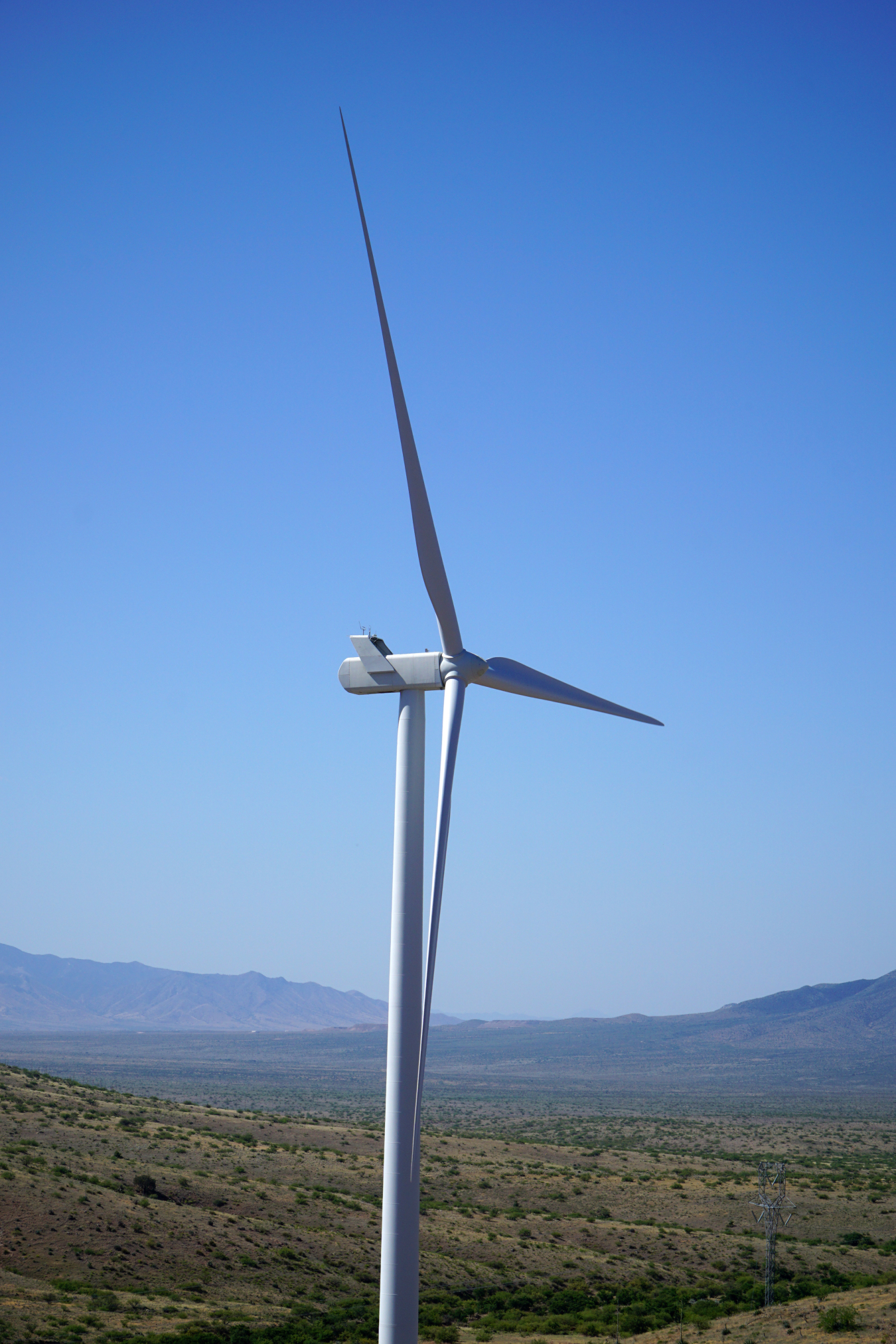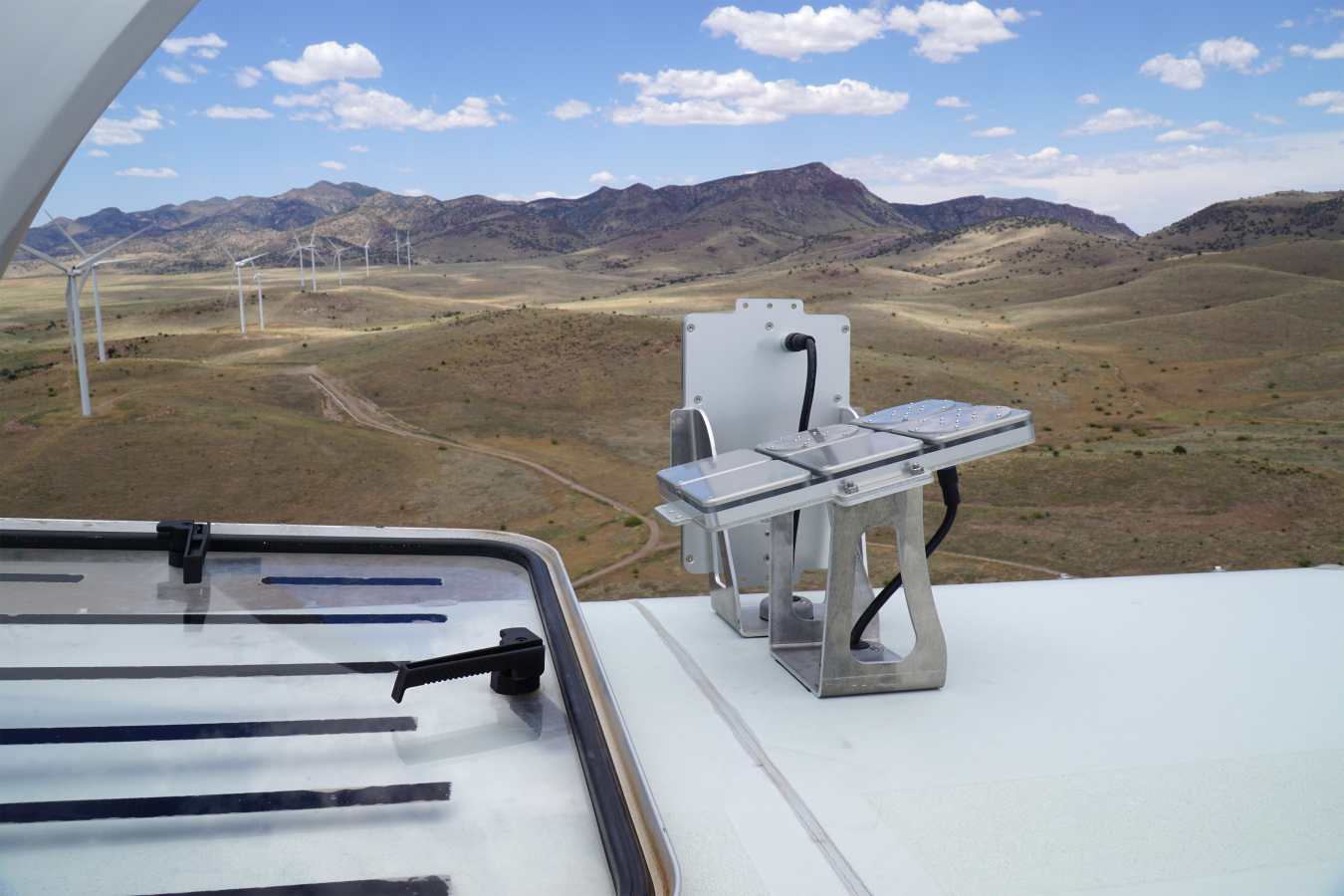For the past two decades, the U.S. Department of Energy’s Wind Energy Technologies Office has worked on ways to protect bats at wind farms.
September 11, 2020
Wind turbine with NRG bat deterrent units installed on nacelle. Photo credit: Harrison Gatos, NRG Systems.
For the past two decades, the U.S. Department of Energy’s (DOE’s) Wind Energy Technologies Office (WETO) has worked on ways to protect bats at wind farms. One such solution is the development of an ultrasonic bat deterrent technology, from initial concept to recent commercial deployment at wind farms domestically and abroad.
Since 2000, installed wind energy capacity in the United States has increased from slightly more than 2.5 gigawatts (GW) to more than 100 GW. As wind energy installation increases, so does the potential impact on various wildlife species, including bats. Based on available data, migratory tree-roosting bats, such as the Eastern Red Bat and the Hoary Bat, are at the highest risk, though much is still unknown regarding bat interactions with wind turbines.
In 2003, DOE and other wind energy stakeholders helped form the Bats and Wind Energy Cooperative (BWEC) to promote and coordinate the study of impact drivers and mitigation solutions for bat fatalities around wind farms. In subsequent years, BWEC-related researchers found that increasing the wind speeds at which turbines begin producing power allowed them to avoid operating during lower wind speeds, when bats are at greater risk. This curtailment method could reduce mortality by 50% or more, but the associated loss in power reduction was costly to turbine operators.
In 2006, researchers identified ultrasound as a potential deterrent for bats around wind turbines. In 2009, in coordination with the BWEC, WETO funded the first wind turbine test of an ultrasonic bat deterrent, developed by Deaton Engineering. The device was composed of eight electrostatic transducers (or speakers) installed in a box mounted at different locations around the nacelle of a wind turbine. Results were mixed due to hardware limitations of the speakers, but the technology showed significant reductions in overall bat fatalities at operational wind turbines.
With funding from WETO in 2015, NRG Systems worked with Bat Conservation International to significantly improve the hardware and functionality of the Deaton prototype device by redesigning the speakers and improving the weatherproofing of the units. Additionally, they conducted a small-scale field test, installing six deterrent units on 16 turbines to demonstrate their effectiveness. While the results of this study showed continued improvement, it also found that some species of bats, such as the Eastern Red Bat, did not exhibit the same response and corresponding mortality reduction compared with other species. NRG Systems is currently working with DOE’s National Renewable Energy Laboratory to refine the ultrasonic signal produced by the device to better target individual high-risk species of concern.

Two NRG devices mounted on top of a wind turbine nacelle, one pointing upward towards the blades, and one pointing to the right of the turbine. Photo credit: Harrison Gatos, NRG Systems.
NRG leveraged the technological improvements and research findings from the 2015 project to conduct various follow-on research projects directly with industry partners to refine the range of the system and further prove its effectiveness. In 2017–2018, Texas State University, NRG, and Duke Energy conducted a field study that found the deterrent system reduced overall bat fatalities by 50%, with a 78% reduction for Hoary Bats specifically. In 2019, NRG announced a partnership with Vestas Wind Systems to offer installation and maintenance services of the bat deterrent system on existing Vestas turbines in the United States and Canada, with the global fleet of turbines to follow. In July 2020, NRG and Siemens Gamesa Renewable Energy (SGRE) also announced collaboration for the installation and support for NRG’s deterrent system across SGRE’s fleet of turbines.
While operating wind turbines can still pose a threat to bats, the deployment and utilization of ultrasonic deterrents shows promise in reducing risk, particularly in low wind-speed areas where the cost of curtailing wind turbine operations could affect the financial viability of a wind farm. DOE and wind industry stakeholders continue to invest in the development of ultrasonic deterrent technologies, to improve deterrent effectiveness among certain species of bats, and to develop innovative ways of extending the ultrasonic signal to cover the entire wind turbine blade. DOE is also supporting other approaches to protecting bats at wind farms, including optimized curtailment strategies that minimize energy loss while protecting bats, in order to provide wind energy stakeholders with a broad toolbox of proven, effective, and affordable bat impact mitigation options.

